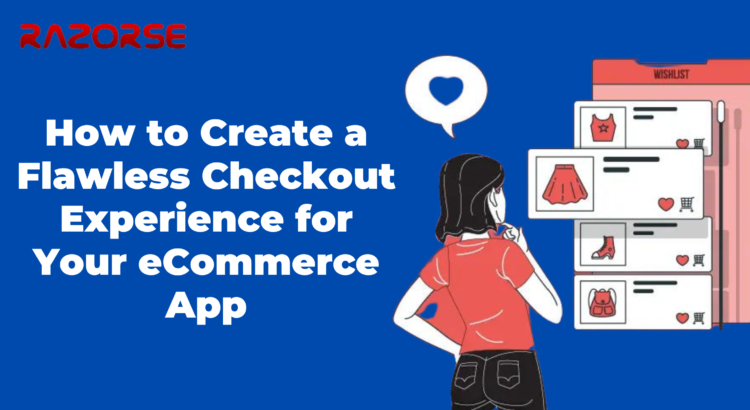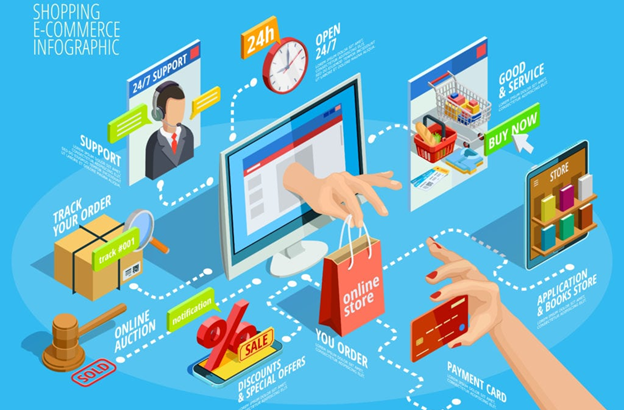recent years, consumer expectations have evolved dramatically. The rise of eCommerce changed how people shop, but now, Quick Commerce-or Q-Commerce-is taking the concept of convenience to the next level. With the promise of delivering products in less than an hour, and in many cases under 15–20 minutes, Q-Commerce is setting a new benchmark for speed in retail. From groceries and daily essentials to electronics and fashion, quick commerce apps are reshaping consumer behavior and forcing businesses to rethink their delivery strategies.
What is Quick Commerce?
Quick Commerce is the next phase of eCommerce, emphasizing speed, efficiency, and hyper-local delivery networks. Unlike traditional online retail, where delivery could take a day or more, Q-Commerce aims to fulfil orders in minutes, leveraging micro-warehouses (dark stores), advanced logistics, and AI-driven demand forecasting. This model thrives on small-basket orders and high frequency, catering to impulse needs and urgent purchases.
Why Quick Commerce is Growing Rapidly
Several factors have contributed to the meteoric rise of quick commerce apps:
- Changing Consumer Expectations – Modern consumers value time more than ever. The convenience of having products at their doorstep within minutes drives repeat usage.
- Technological Advancements – AI-based inventory management, route optimization algorithms, and mobile app innovations enable faster delivery with fewer errors.
- Urban Lifestyle – In densely populated cities, limited storage space and busy schedules mean people prefer to order essentials as needed rather than stock up in bulk.
- Pandemic Impact – COVID-19 accelerated digital adoption and highlighted the importance of fast, contactless delivery services.
Emerging Trends in Quick Commerce
As Q-Commerce continues to grow, several trends are shaping its future:
1. AI and Predictive Analytics
Artificial Intelligence is becoming the backbone of quick commerce. Predictive analytics helps forecast demand patterns, ensuring the right products are stocked in the right locations. This minimizes delays and improves efficiency.
2. Sustainable and Green Delivery
With increased delivery frequency comes a larger carbon footprint. The next wave of Q-Commerce apps will likely focus on eco-friendly solutions, such as electric delivery vehicles, bicycle couriers, and biodegradable packaging.
3. Integration of Multiple Product Categories
Initially dominated by groceries, quick commerce apps are now expanding to include pharmaceuticals, pet supplies, beauty products, and electronics. The broader the product catalog, the higher the user engagement.
4. Subscription-Based Models
To retain customers, many quick commerce platforms are offering subscription plans with perks like free delivery, early access to discounts, and exclusive product availability.
5. Voice and Chatbot Ordering
Integration with voice assistants like Alexa and Google Assistant, as well as AI-powered chatbots, will make ordering even faster and more seamless.
Challenges Ahead for Quick Commerce
While the opportunities are vast, Q-Commerce is not without its hurdles:
- Profitability Concerns -Fast delivery often comes at high operational costs, and balancing speed with profitability remains a challenge.
- Inventory Limitations -Maintaining adequate stock in small warehouses without overstocking is complex.
- Workforce Management -Ensuring fair wages, reasonable delivery times, and safety for delivery personnel is crucial for sustainable growth.
- Regulatory Issues -Governments may introduce regulations around labor practices, safety standards, and urban traffic congestion caused by high delivery frequency.
The Road Ahead
Looking ahead, the quick commerce industry will become smarter, greener, and more integrated with other digital services. We may see deeper personalization-apps suggesting products based on past behavior, real-time location, and even health data. Partnerships between Q-Commerce platforms and local retailers could allow smaller businesses to reach customers without building their own delivery infrastructure.
Additionally, the growth of drone deliveries and autonomous vehicles could revolutionize logistics, cutting down delivery times further while lowering operational costs. Blockchain technology may also play a role in enhancing supply chain transparency and ensuring product authenticity.
The future of Q-Commerce will depend on balancing consumer expectations for speed with operational sustainability and profitability. Businesses that master this balance will not only dominate the market but also reshape consumer habits for years to come.
Conclusion
Quick Commerce is more than just a retail trend-it’s a consumer-driven revolution that’s here to stay. As technology advances and consumer behavior continues to shift, Q-Commerce apps will evolve into smarter, faster, and more sustainable platforms. Businesses that embrace this change early will have a distinct advantage in capturing market share, building customer loyalty, and driving long-term growth.
At Razorse Software, we specialize in creating high-performance mobile applications tailored for the future of retail. From designing intuitive user interfaces to integrating advanced AI-powered logistics, we help businesses transform their delivery operations into agile, efficient, and customer-centric experiences. Whether you’re an established retailer or a startup exploring the Q-Commerce model, our expert team can bring your vision to life with innovative, scalable, and future-ready solutions. #QuickCommerce #QCommerce #RetailTech #EcommerceInnovation #AIinRetail #LastMileDelivery #RazorseSoftware #FutureOfRetail #MobileAppDevelopment #OnDemandDelivery






